Northwest Vietnam, a legendary land of majestic mountains and diverse cultures, is not only famous for its natural beauty but also the cradle of many unique traditional craft villages. Among them, the brocade weaving villages of the Northwest stand out as precious gems, preserving the cultural essence of ethnic minorities in each thread and pattern. Visiting the Northwest, tourists not only admire the beauty of the vibrant brocade products but also have the opportunity to discover cultural and historical stories hidden behind each woven work of art.
Explore Famous Brocade Villages in Northwest Vietnam
1. Lung Tam Village – Ha Giang: Where Brocade Tells Tales of Mountains and Forests
Lung Tam, a small village in Quan Ba district, Ha Giang province, has long been renowned as one of the most typical brocade weaving villages in Northwest Vietnam. Nestled amidst a poetic natural landscape, where the gentle Mien River flows, Lung Tam is home to the Mong ethnic people, who have preserved and developed the traditional brocade weaving craft for generations.
Since 2001, the cooperative model in Lung Tam has marked a significant turning point, opening up opportunities for Lung Tam brocade to reach further, to domestic and international markets. This innovation has not only improved the economic lives of local people but also contributed to preserving and promoting the traditional cultural values of brocade weaving.
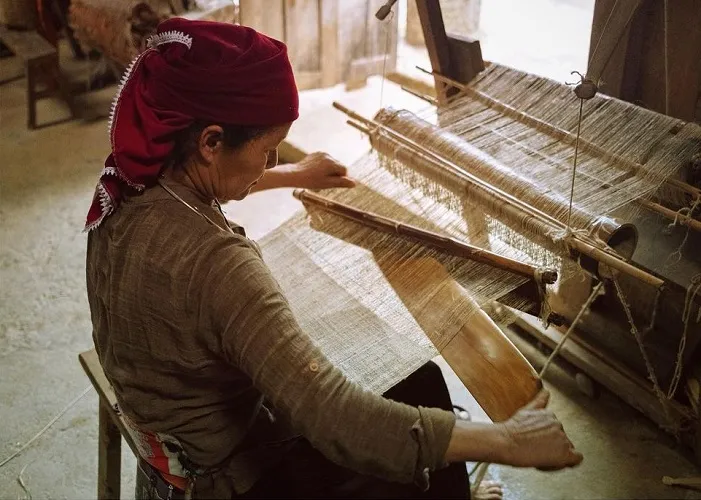
Visiting Lung Tam, tourists will be amazed by the meticulous and artistic handmade brocade weaving process. Mong women diligently work at their looms, their hands skillfully moving the shuttle, weaving each meter of linen fabric with vibrant colors. The uniqueness of Lung Tam brocade lies in its distinctive patterns, imbued with cultural and spiritual significance.
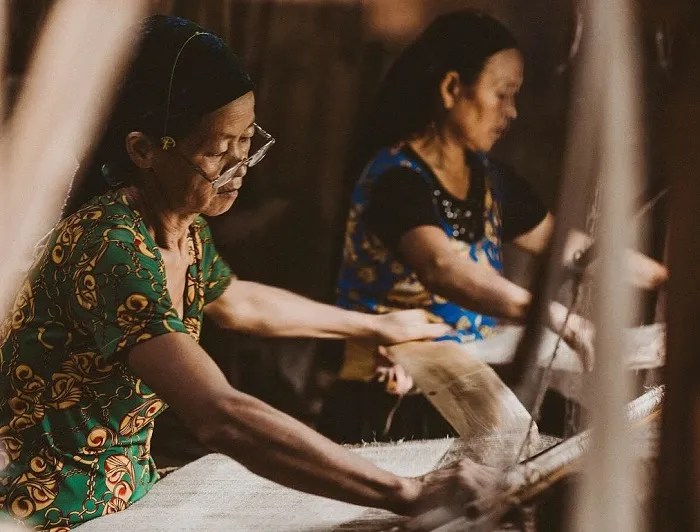
The Mong people of Lung Tam use the techniques of applying colored fabrics, hand embroidery, and drawing beeswax patterns to create countless intricate motifs on brocade. Each pattern and motif is not only a decorative product but also a language telling stories about the life, culture, and people here. Tourists coming to Lung Tam not only admire the beauty of brocade but can also buy unique souvenirs such as clothes, bags, hats, scarves, etc., imbued with the cultural identity of the Northwest.
2. Cat Cat Village – Sapa: The “Soul” of Tourism with Vibrant Brocade
Speaking of brocade weaving villages in Northwest Vietnam, one cannot ignore Cat Cat village, a famous community-based tourism destination in Sapa, Lao Cai. Cat Cat is known as the “soul” of Sapa tourism, not only for its beautiful natural scenery but also for the long-standing traditional brocade weaving craft of the Mong ethnic people.
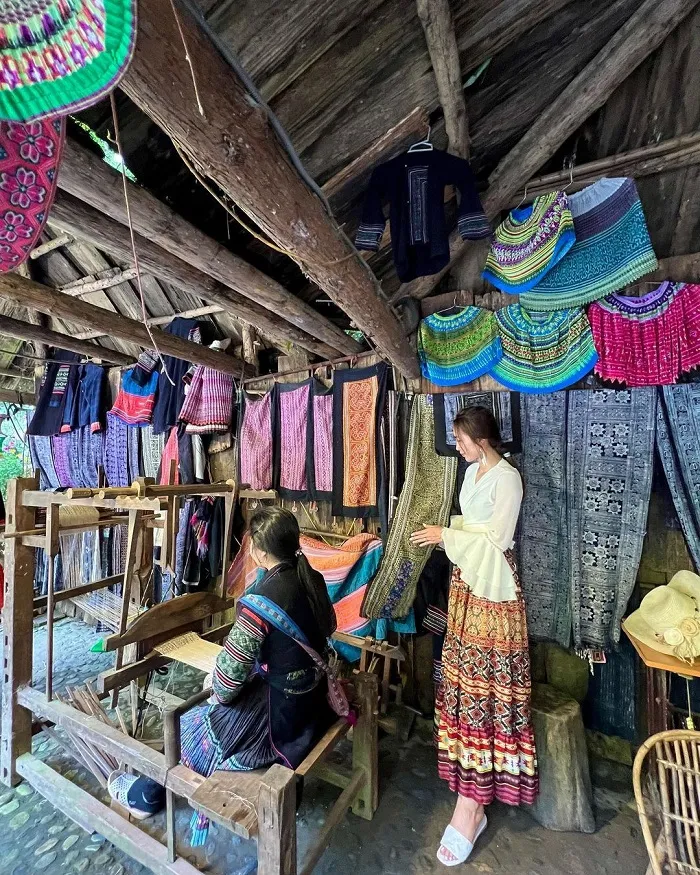
As soon as you set foot in Cat Cat village, tourists will be attracted by shops filled with brocade products. From traditional Mong costumes to scarves, bags, wallets, etc., all are woven from the skillful hands of local people, with delicate patterns and eye-catching colors. In Cat Cat, the Mong people use indigo dyeing and dyeing with forest leaf water and wood ash water to create brocade products with diverse colors and unique designs.
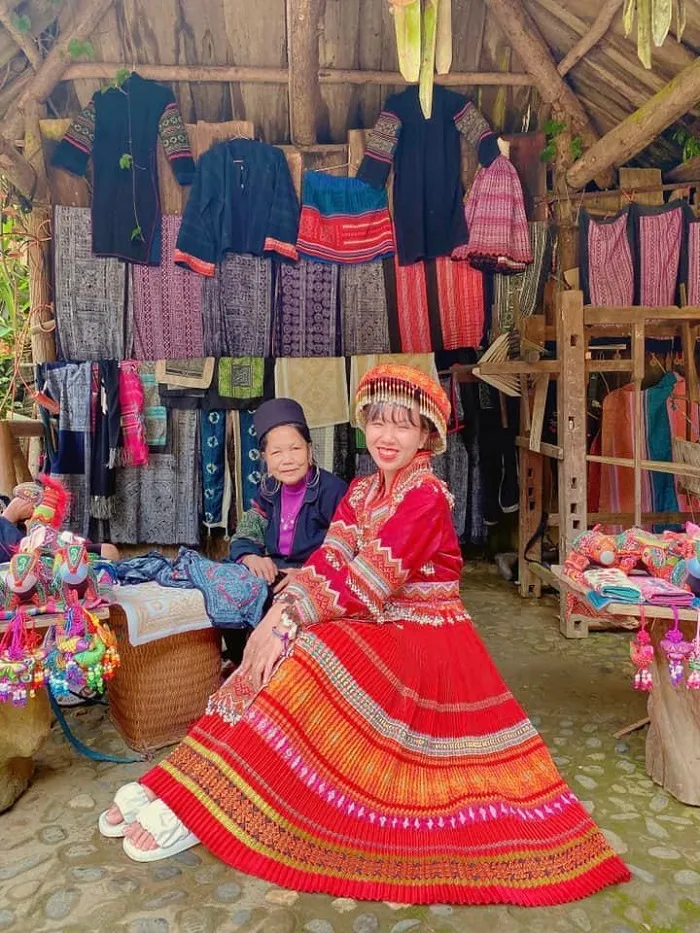
Brocade weaving in Cat Cat and Sapa has a history of hundreds of years. The quintessence of the craft lies in the meticulous steps, from harvesting flax plants, drying, spinning flax, drawing beeswax patterns, natural dyeing, to weaving fabric and sewing finished products. In the past, Cat Cat brocade mainly served the daily needs of the people. However, when Sapa tourism developed strongly, the Mong people creatively added many new products such as bags, wallets, backpacks, etc., to meet the diverse needs of tourists, while contributing to promoting the unique brocade culture of the Northwest.
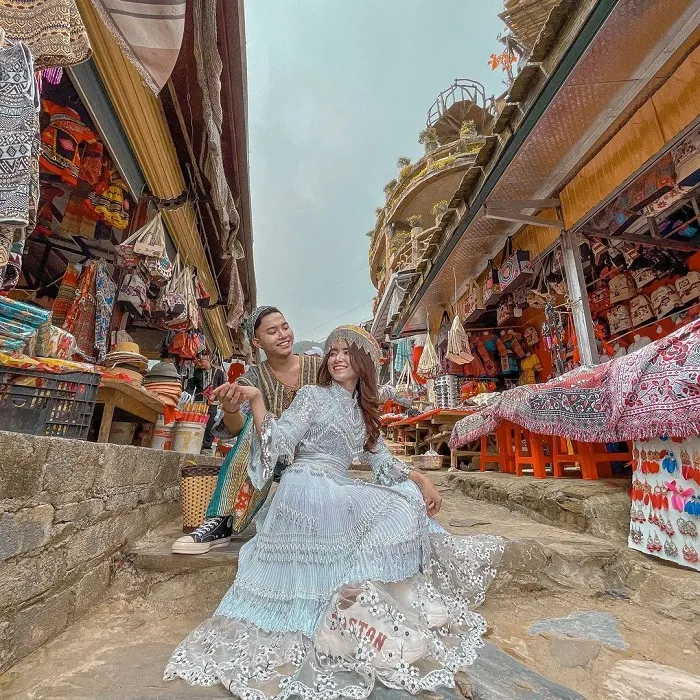
Coming to Cat Cat, tourists not only buy brocade but can also rent traditional costumes to take souvenir photos, immersing themselves in the unique cultural space of the highlands.
3. Sin Suoi Ho – Lai Chau: Unique Brocade from Mountain Stones
Sin Suoi Ho, a famous community-based tourism village in Lai Chau, is the next destination in the journey to explore brocade weaving villages in Northwest Vietnam. This place not only attracts tourists with its wild and majestic natural beauty but also with the unique linen weaving craft of the Mong ethnic people.
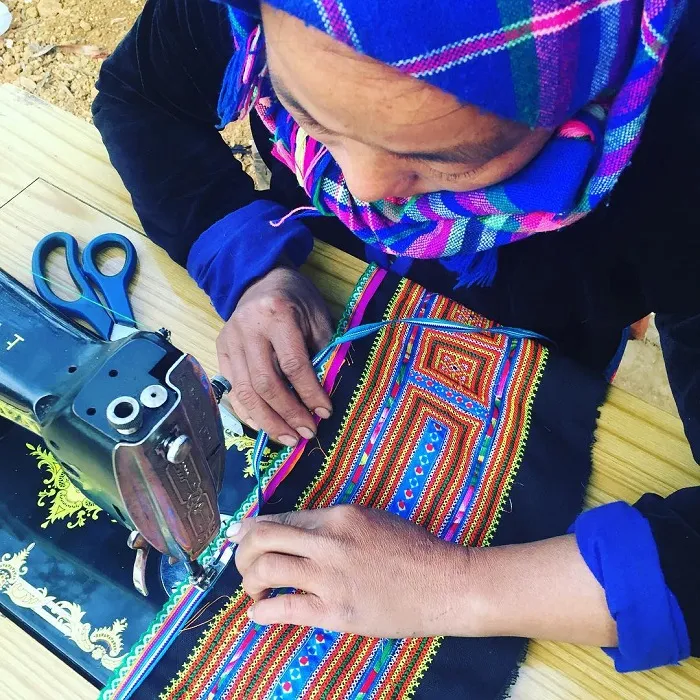
Unlike many other linen weaving villages, the Mong people in Sin Suoi Ho use large stones to flatten the fabric after weaving. This is a unique technique, creating a difference for Sin Suoi Ho brocade. Mong women plant flax, spin yarn, and weave fabric themselves to make bags, skirts, shirts, etc. Linen fabric here has the advantage of being thick and warm, very suitable for the highland climate. To make the fabric smoother and shinier, the Mong people have creatively used stones to iron the fabric. Especially, after ironing with stones, the beeswax patterns become even more prominent on the fabric background.

In Sin Suoi Ho, the use of stones to iron fabric is a tradition that has been preserved for many generations. A stone for ironing fabric can be passed down from generation to generation, even kept for 3-4 generations. Because of the elaborate weaving, ironing, and sewing process, traditional costumes here are of high value, from 2-3 million VND.
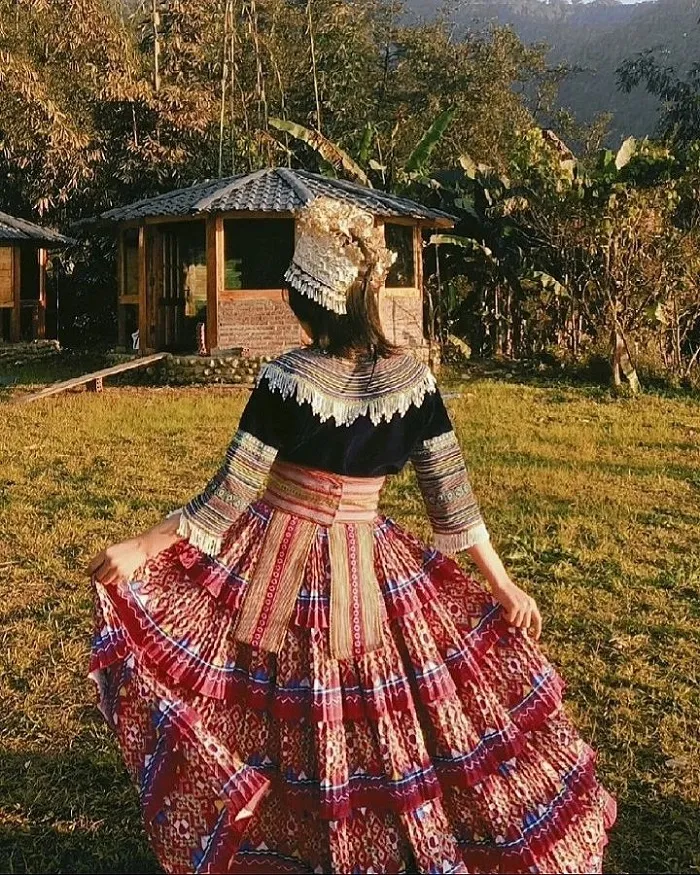
Today, as Sin Suoi Ho becomes an attractive community-based tourism destination, the linen weaving craft of the local Mong people is increasingly known by many tourists. Visiting the village, tourists can learn about the process of weaving fabric, sewing traditional costumes, and buying unique brocade products as gifts.
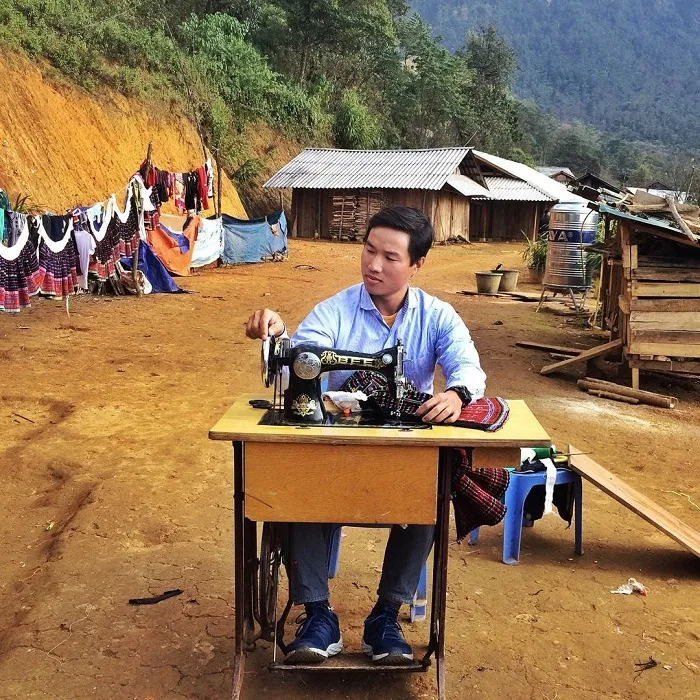
Cultural and Tourist Values of Northwest Brocade Villages
Each brocade weaving village in Northwest Vietnam carries long-standing traditional cultural values, passed down through generations. Coming to these villages, tourists not only admire the beauty of brocade but also have the opportunity to learn more about the culture and customs of ethnic minorities.
Northwest brocade products are not only commodities but also works of art, cultural symbols, and bridges between the past and the present. Brocade village tourism in the Northwest is not only a journey to discover material beauty but also a deep cultural experience, helping tourists understand more about the diversity and richness of Vietnamese culture. Come to the Northwest, explore the brocade villages to feel and appreciate the unique cultural values of this land.